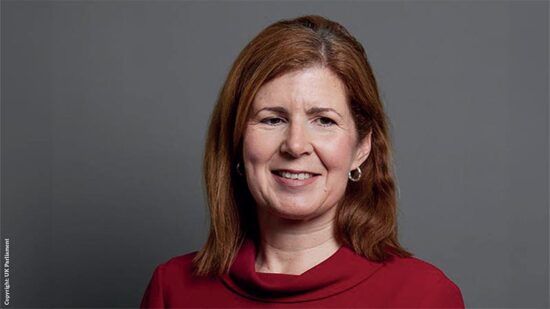An interest in ESG emerged early for Matt Patsky, CEO of Trillium Asset Management, who at age 11 poured his first $500 from mowing lawns and shoveling driveways in New England into the Dreyfus Third Century Fund.
Patsky was intrigued by the fund’s holistic approach to what was considered a good investment. He learned about the fund through the Wall Street Journal, which his father used to bring home after leaving his factory job, swinging by the lobby of his building to pick up a copy when he could, Patsky said.
Having grown up a part of church collections gathered to feed the hungry or to support those suffering disasters around the world, Patsky felt a responsibility to try and make the world a better place. And while the Dreyfus fund wasn’t marketed as a socially responsible investment, its managers seemed to understand and care about the social and environmental impact of companies — the very focus of Trillium today.
Patsky serves not only as CEO, but also as one of three portfolio managers of the firm’s largest fund, Trillium ESG Global Equity Fund, which has about $750 million in assets. With half invested in U.S. holdings and the rest around the world, it hunts for leaders in the move towards a carbon constrained world.
Liz Skinner: How is the Biden administration likely to impact the ESG investing space?
Matt Patsky: The biggest difference is an approach to the materiality of the information available through the environmental, social, governance data. Increasingly, global asset managers and asset owners have come to determine that there is materiality to this information, despite the fact that it’s still an evolution in terms of quality. The response we got from the most recent administration before Biden was that the demands for people to get this information was increasingly putting a burden on business and therefore, we were going to squelch it. And so they came up with trying to look at every angle to squelch it.
LS: Which actions are you thinking of?
MP: Reducing access to be able to approach and discuss with management and have influence on management teams. Trying to alter the rules for ERISA under the Department of Labor. They put in place a new rule that implied using this additional information in the investment process was somehow detrimental to returns. Now the Biden administration comes in and I think you’ll see support for the continued improvement in disclosure and support for there being more standardization of what it is that we’re asking and what it is we want disclosed.
It would appear that the Biden administration is going to make the decision that because the new DOL rule makes no sense — given that we know that inclusion of ESG actually is additive to returns and reduces risk in portfolios — that it will be ignored until it can be fully reviewed and vetted.
LS: Have you made any kind of significant changes in the global equity fund as a result of the change in administration?
MP: We were always positioned to benefit from a move toward a more carbon constrained world, where more of our energy source is coming from renewables. While there were certainly efforts to slow it down, the trend continued right through the last administration. We had an opportunity, mostly around Covid, to take a look at whether we were positioned well in some names that we had thought were overvalued that came down in the beginning of Covid, so we were able to get into those at valuations we found more attractive.
LS: What is fund’s overall strategy?
MP: We’re trying to make sure that we’re investing in companies that have an overall strategy. That includes a thoughtful approach to a carbon constrained world. The Paris accord mandates that we move into an environment where we’re basically trying to curb climate change, so we’re looking for well positioned companies, industry leaders, innovators that have strong ESG profiles. We’re always looking first and foremost that it’s a good investment, in addition to being a good, strong ESG story. In the global equity strategy, we’re particularly focused on making sure that we’ve got very strong return on invested capital, always looking to make sure that we’ve got higher return on invested capital than the average cost of capital, so that we’re seeing good positive returns generated for the shareholders over time.
LS: What would you say is unique about this investment compared to kind of other ESG funds that have been introduced by competitors?
MP: It has a long history, over 20 years. It has always been fossil-fuel free. It has also always been relatively balanced across all other sectors. The earliest ESG funds tended to have much heavier weighting toward technology and industrials. We focused on trying to make sure that it was more balanced across sectors, with the exception of fossil fuels. We’re trying to get exposure to the full market. It’s much less concentrated than an awful lot of the ESG strategies you see out there that are active. It’s also more concentrated than a lot of the EST strategies you see out there that are passive.
LS: What are your thoughts on active vs. passive in the ESG field?
MP: The problem with passive investing right now in an ESG strategy is that we are still in the early days of the data being consistent and in measuring the same across companies. So right now, without clear definition and clear requirements for disclosure, companies can determine what they’re releasing, how they’re releasing, and data can be interpreted in very different ways between one data provider and another.
We need regulators to be more active like in the EU. The United States needs to be more active in setting standards and then requiring disclosure. And then we need to be thoughtful about one other important issue on active versus passive, which will be solved over time. What if I am an active manager and I am looking at ESG data, I want to be talking to the company management teams, talking to the other players in the industry and have a forecast of where they’re headed. I would never invest in a company if I didn’t have a thought of where they were going financially also know where they’re going in terms of the ESG profile. Are they improving? Are they declining? I want to be able to incorporate that into the analysis of owning a name that’s not possible with the data set at the present time.
LS: What advice would you give to financial advisers and investors on how they can be sure an ESG fund isn’t ESG in name only? You know, the greenwashing problem that goes on.
MP: You need to look at what’s in the fund and ask yourself, is this a lie? What I find amazing is when somebody will promote an ESG strategy or an impact strategy, and you’ll find names in it that quite frankly just shouldn’t be there. You need to bring a little bit of skepticism to what you’re reading in the marketing materials. So if I tell you this is an ESG leader, and in my portfolio you find ExxonMobil, you should go look for another fund. If you find Nestle, which is the world’s largest source of plastic water bottles around the world. You should look elsewhere. There are just some like basic sort of look. Now, there are no perfect companies. So I’m not saying you’re going to be able to look at a portfolio and say, Oh my God, all of the names in here are obvious ESG leaders, but bring a healthy amount of skepticism to looking at them. Particularly if someone says, ‘Oh, I was able to do this really simply with a quantitative overlay and I’m able to offer it to you for 20 basis points.’ Ask yourself, ‘is that realistic given where we are?’
LS: What do you think about funds that say they invest in improvers?
MP: Not a bad strategy, right? Because some of the movement we’re going to see is players who were maybe bottom- or core-tile on ESG making incredible efforts, with often times new management coming in to try to turn things around that should add significant value. I don’t disagree that there’s opportunity there. It isn’t generally our approach because we generally are investing in leaders and then pressing them to continually improve. But there is significant alpha to be had by companies improving their ESG profile. I’d also point out one other factor, which is often times what we see are opportunities where we think there’s been miss-scoring on an ESG factor by one of the major players.
We go ahead and put it in the portfolios and then we say to the analyst that we noticed you scored this one this way. You may have missed this, this and this, that they’ve done. And so you see this marked improvement in the score that comes either three months or six months later. And suddenly it’s in portfolios that are using an ESG overlay and you get this ESG premium. So we’re seeing the ability to generate alpha by recognizing basically miss ratings of stocks on the ESG side.
LS: How do you engage with companies?
MP: Most of our engagement starts with simple dialogue, sometimes that’s in coalition with other investors sometimes in coalition with non-profits that might be working on the issue, but in most cases that’s really where it’s most successful. In about 80% of our engagements, we actually reach agreement with the company on making change without further steps beyond that dialogue. And that’s because I think most people see us as working in a collaborative way to improve the shareholder returns. Also, we file shareholder resolutions designed to dramatically raise awareness of the issue with customers, with other shareholders, and obviously with the company broadly, including the management team and the board, and trying to get the media to focus on this issue.
50% of the time it results in them making the change because they end up saying, this is not something we want to see raised to this level and debate it and have it on our proxy and have shareholders voting on it. They say, you’re right, gender pay equality is a real issue and we should be paying attention to it and we should have a response and it shouldn’t be that we don’t care.
LS: Have we passed the days where investors and advisers think ESG investing will result in giving up returns?
MP: Yes. We’re past that now. What I love now is that millennials and the younger investors who are now constantly asking the question of how much out-performance do you think that incorporating ESG provides? But really, the baby boomers are still asking us about how much of a sacrifice. And it’s a wonderful acknowledgement that we’re moving to where people recognize the significance of this information in terms of long-term performance.








